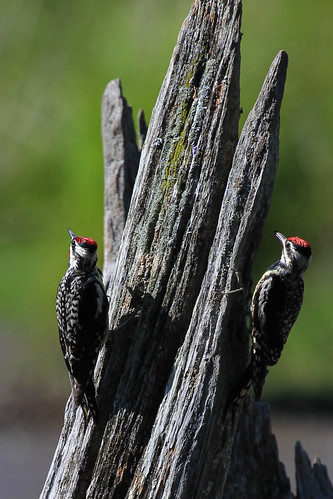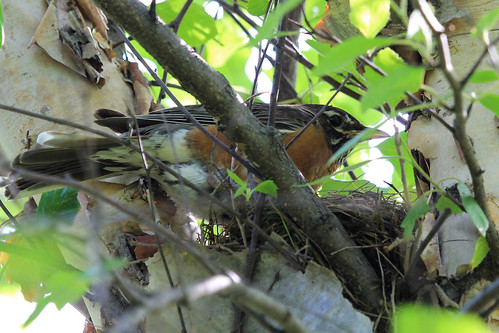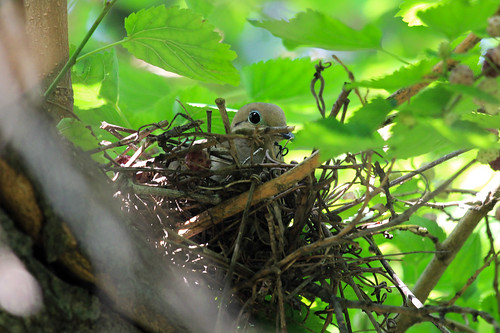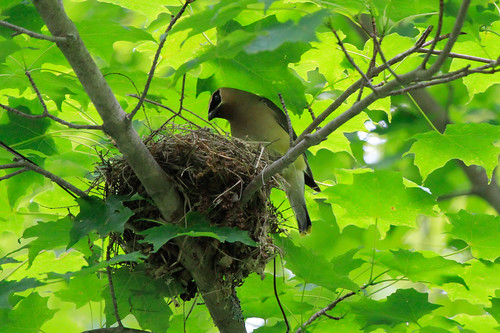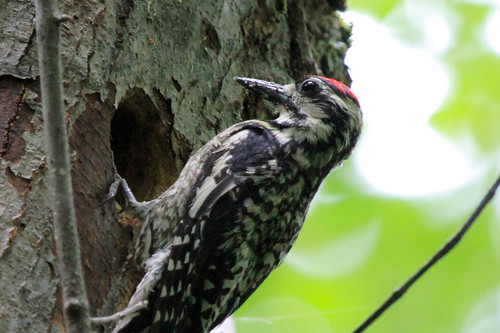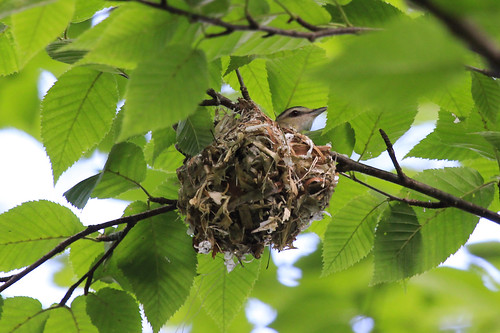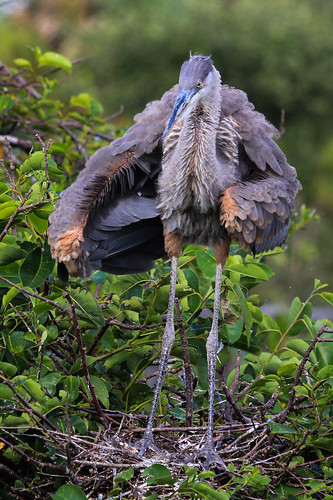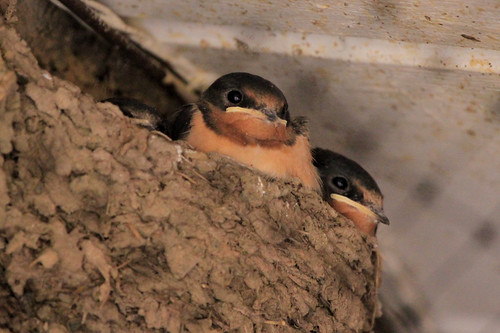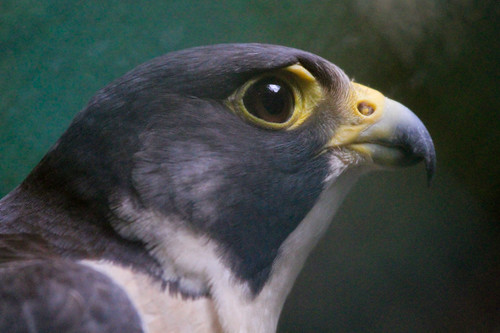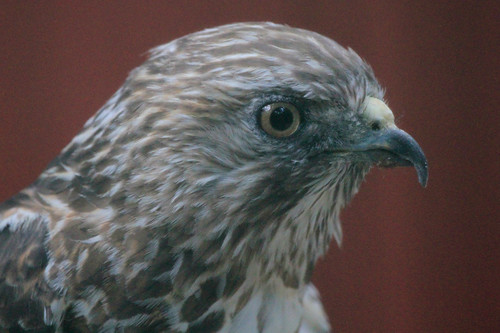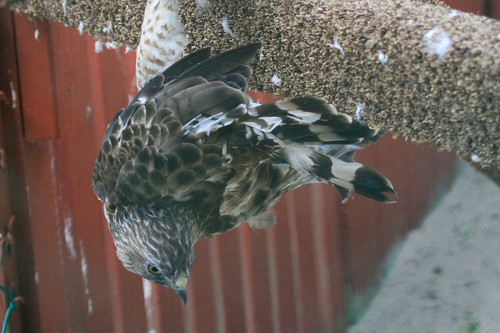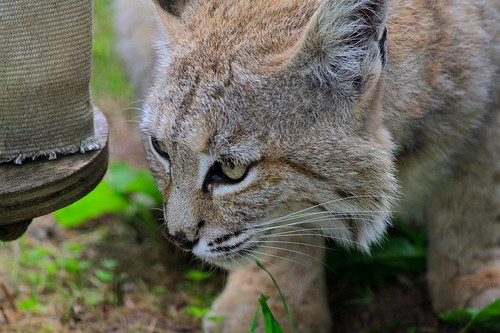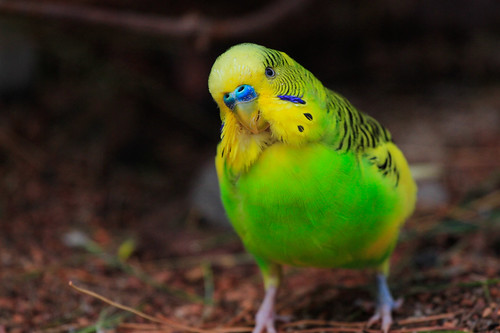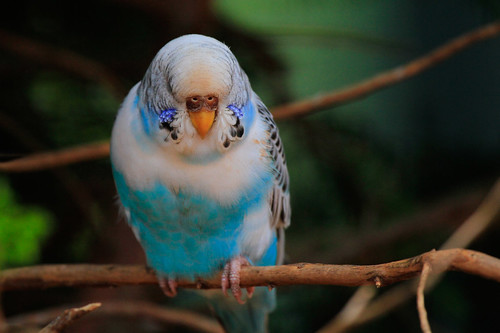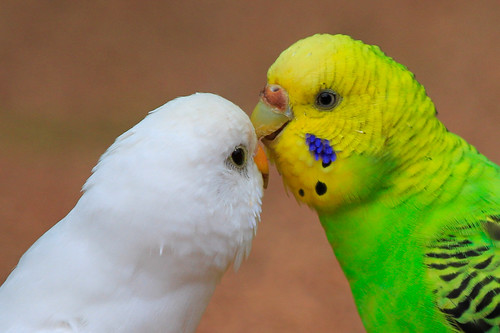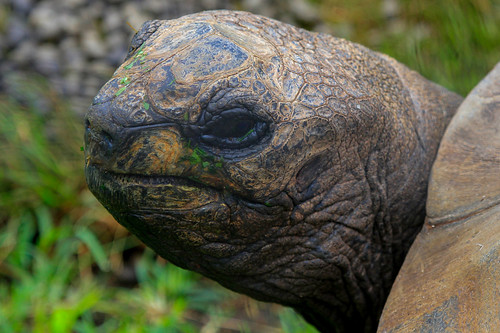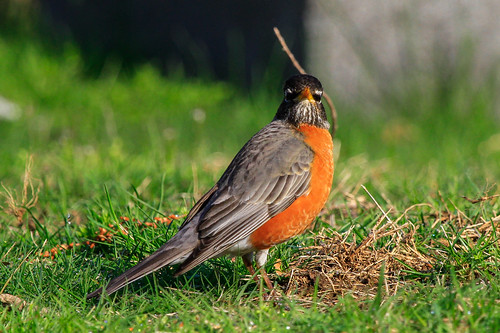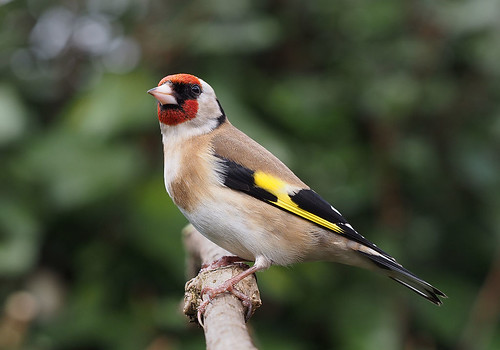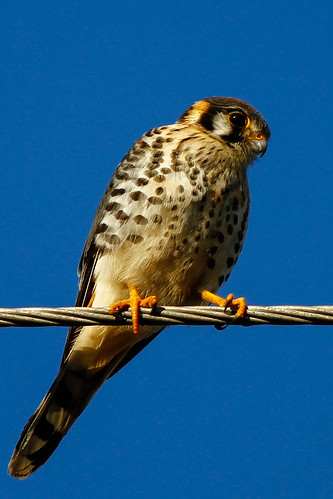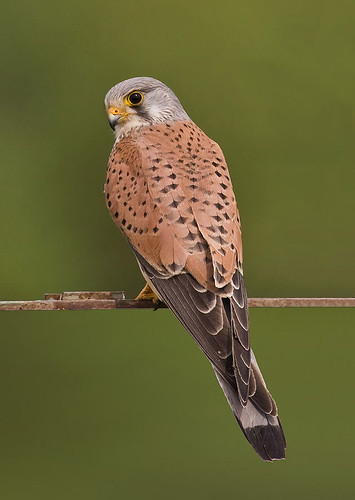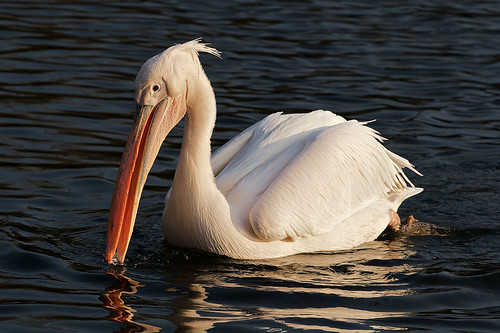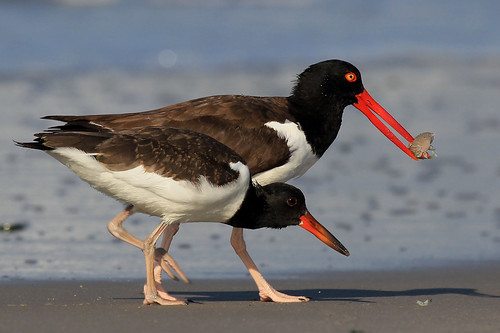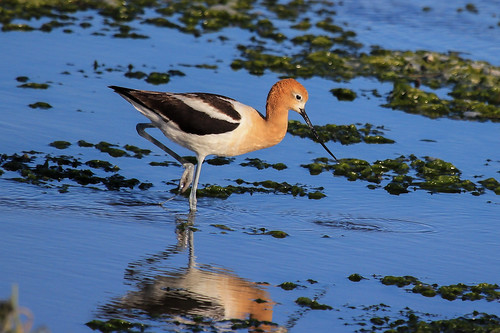Pileated Woodpecker is a very large North American woodpecker, roughly crow-sized, inhabiting deciduous forests in eastern North America. It is the largest woodpecker in the United States. Pileated woodpeckers will often chip out large and roughly rectangular holes in trees while searching out insects. Pileated woodpeckers also raise their young every year in a hole in a tree. In April, the hole made by the male attracts a female for mating and raising their young. Once the brood is raised, the pileated woodpeckers abandon the hole and will not use it the next year - but other cavity-nesting birds will find and re-use it.
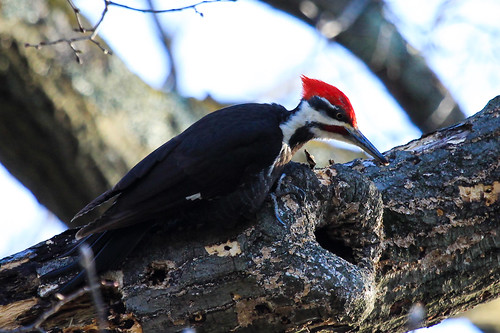
Downy Woodpecker is the smallest of North America's woodpeckers. Downy woodpeckers forage on trees, picking the bark surface in summer and digging deeper in winter. They mainly eat insects, but also seeds and berries.
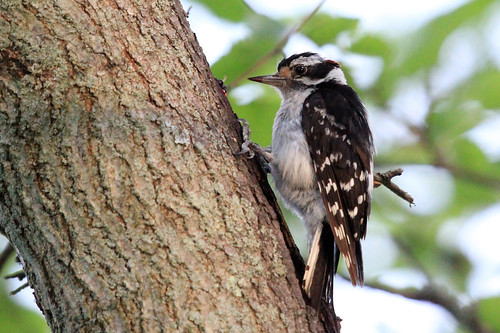
Hairy Woodpecker inhabits mature deciduous forests in the United States and Central America. Mating pairs will excavate a hole in a tree, where they will tend to, on average, four white eggs. These birds forage on trees, often turning over bark or excavating to uncover insects. They mainly eat insects, fruits, berries and nuts, sometimes tree sap. They are also known to peck at wooden window frames and wood sided homes that may house bugs.
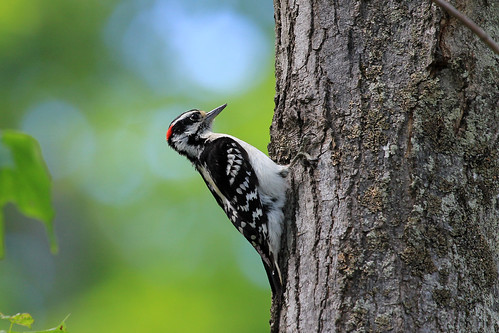
Yellow-Bellied Sapsucker was first described by Carl Linnaeus in 1766. They nest in a large cavity excavated in a deciduous tree, often choosing one weakened by disease; the same site may be used for several years. Both the male and the female work in making the nest, where five or seven white eggs are well concealed. Both birds share in hatching. They will mate with the same partner from year to year, as long as both birds survive.
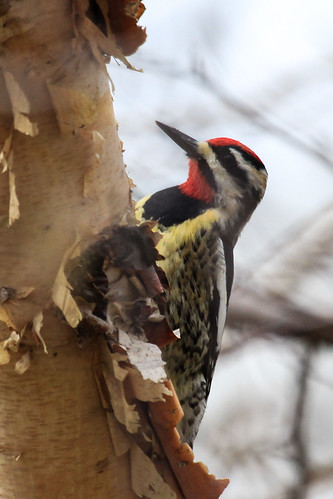
Red-Bellied Woodpecker does not actually have a red belly (it's pink-ish), but it does have a red head. But it can't be called Red-Headed Woodpecker, because that name was already taken but an even more red-headed woodpecker. Got it? Cool fact: its tongue is longer than its body. It fits by wrapping around the skull inside its head.
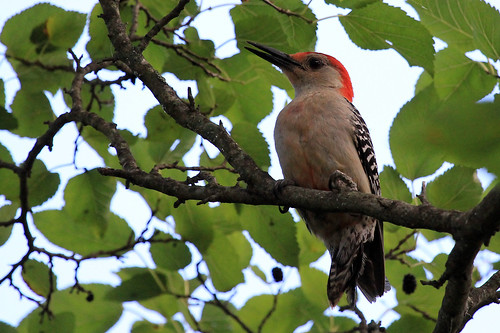
Northern Flicker is one of the few woodpeckers that migrate. They are also special in that they breed on the ground and not in tree cavities. The Eastern and Western flickers have different colors on their undertails and underwings. You can see it in the eastern specimen in my picture - its tail is yellow. The western birds have red. They used to be considered different species, but now it's agreed they are the same.

Golden-Fronted Woodpecker is the most ubiquitous in its range. When I went to Rio Grande Valley, this was the first bird I saw - in the airport parking lot. Its name is obviously based on the yellow patch on the back of its neck. But like most similar woodpeckers, the males also have a red patch on the top of their head, like this one:
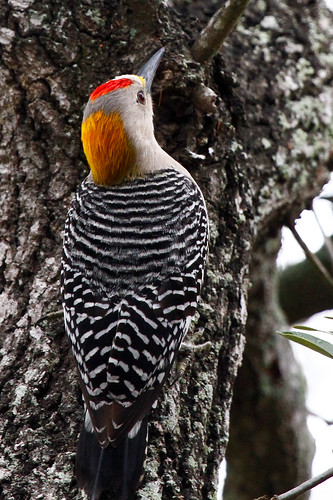
Gilded Flicker is a southwestern species. It's very similar to the Northern Flicker above, but it earns its special coolness from nesting in saguaro cacti, like this guy here:

Syrian Woodpecker is my only international woodpecker so far. It is common in southern Europe and the Middle East. It looks similar to the Downy and Hairy woodpeckers of America, and its habits are also similar.
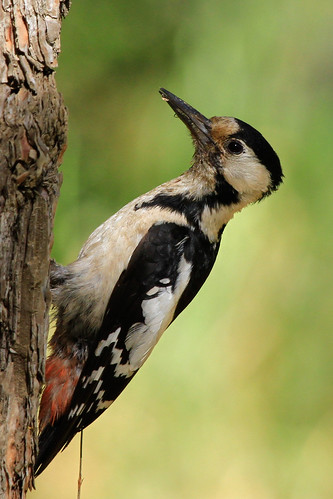
A pair of Yellow-Bellied Sapsuckers enjoying their morning:
